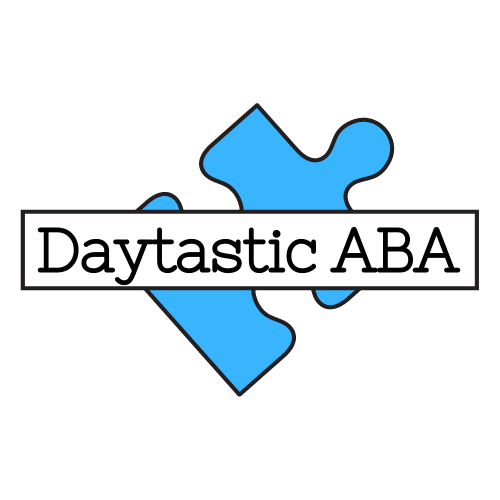Token Economies: How to Use Them Effectively in ABA
Token Economies: How to Use Them Effectively in ABA
Token economies are a widely used behavior management and reinforcement system within Applied Behavior Analysis (ABA). They provide structured reinforcement for appropriate behavior by utilizing tokens as conditioned reinforcers that can later be exchanged for backup reinforcers. This system is particularly effective in educational and clinical settings for individuals with autism spectrum disorder (ASD), developmental disabilities, and other behavioral challenges (Kazdin, 2012). This article explores the fundamental components of token economies, their benefits, strategies for effective implementation, and common pitfalls to avoid.
What Is a Token Economy?
A token economy is a reinforcement system in which individuals earn tokens for engaging in target behaviors. These tokens function as conditioned reinforcers, meaning they have acquired reinforcing properties through association with primary or secondary reinforcers (Cooper, Heron, & Heward, 2020). Over time, individuals can exchange tokens for backup reinforcers, which are items or activities that hold inherent value to them, such as snacks, toys, or additional playtime.
Token economies operate based on principles of operant conditioning, particularly positive reinforcement. By systematically reinforcing desirable behaviors, this system increases the likelihood of their recurrence while providing structure and predictability (Miltenberger, 2015). Token economies have been successfully used in classroom management, therapeutic settings, and even corporate environments to improve productivity and adherence to behavioral expectations.
Essential Components of a Token Economy
To implement a token economy effectively, several key components must be in place:
- Selection of Target Behaviors: Defining clear and measurable target behaviors is the foundation of a successful token economy. These behaviors should be appropriate to the learner’s developmental level and individualized based on their needs and goals. For instance, a teacher may reinforce on-task behavior in the classroom, while a therapist may reinforce functional communication in a clinical setting (Cooper et al., 2020).
- Choice of Tokens: Tokens can take various forms, such as stickers, points, poker chips, or digital points on a reward chart. The chosen token should be easily manipulable, durable, and meaningful to the individual receiving it (Kazdin, 2012). The token should also be distinct from primary reinforcers to maintain its function as a conditioned reinforcer.
- Selection of Backup Reinforcers: Backup reinforcers are items or activities that individuals find inherently rewarding. These may include tangible items like toys and snacks or intangible rewards like social praise, extra recess time, or screen time. The effectiveness of a token economy depends on the reinforcing value of these backup reinforcers, which should be periodically assessed and varied to maintain motivation (Miltenberger, 2015).
- Establishing the Exchange Rate: A critical aspect of a token economy is determining the token-to-reinforcer exchange rate. The exchange rate should be set at a level that balances effort and motivation—tokens should not be too easy or too difficult to earn (Cooper et al., 2020). Gradually, as the system progresses, the exchange schedule can be modified to promote delayed gratification and self-regulation.
- Token Delivery and Reinforcement Schedule: Tokens should be delivered immediately following the occurrence of a target behavior to strengthen the association between behavior and reinforcement. The reinforcement schedule can be continuous at first and later transition to an intermittent schedule to maintain behavior over time (Kazdin, 2012). Verbal praise should accompany token delivery to enhance its reinforcing value.
Benefits of Token Economies in ABA
Token economies have been extensively researched and have demonstrated effectiveness across various populations. Some key benefits include:
- Promoting Positive Behavior Change: Token economies systematically reinforce desirable behaviors, increasing their frequency and consistency. This structured reinforcement method helps individuals learn new skills and appropriate responses in different environments (Miltenberger, 2015).
- Encouraging Delayed Gratification: Unlike immediate reinforcement, token economies require individuals to accumulate tokens before accessing backup reinforcers. This delay in reinforcement fosters self-control and patience, essential skills for long-term behavior regulation (Kazdin, 2012).
- Enhancing Generalization and Maintenance: Token economies can be implemented across various settings, including schools, homes, and therapy centers. When properly structured, they promote generalization, ensuring that learned behaviors extend beyond the training environment. Additionally, by gradually fading tokens and increasing natural reinforcers, behavior maintenance is encouraged (Cooper et al., 2020).
- Increasing Motivation and Engagement: Because token economies offer a choice of backup reinforcers, they tend to be highly motivating. Learners are more engaged when they perceive the system as fair and when reinforcers align with their interests and preferences (Miltenberger, 2015).
Strategies for Effective Implementation
To maximize the effectiveness of a token economy, the following strategies should be considered:
- Individualizing the System: A token economy should be tailored to meet the specific needs and preferences of the individual. For instance, some learners may respond better to visual token boards, while others may prefer digital point systems. Reinforcer assessments should be conducted regularly to ensure that backup reinforcers remain effective (Cooper et al., 2020).
- Providing Clear Expectations: Expectations for earning tokens should be clearly communicated to learners using visual supports, social stories, or direct instruction. Ensuring that individuals understand the contingency between behavior and token delivery enhances the system’s effectiveness (Kazdin, 2012).
- Fading the Token System: While token economies are powerful tools, they should not become permanent dependency systems. Over time, tokens should be faded by increasing the response effort required for earning tokens or shifting to naturalistic reinforcement strategies (Miltenberger, 2015).
Common Pitfalls and How to Avoid Them
Despite their effectiveness, token economies can fail if not implemented correctly. Some common pitfalls include:
- Over-Reliance on Tokens: If individuals become overly dependent on tokens, they may struggle to engage in appropriate behavior without extrinsic reinforcement. To prevent this, natural reinforcers should gradually replace token reinforcement (Cooper et al., 2020).
- Using Non-Preferred Backup Reinforcers: If backup reinforcers are not meaningful to the learner, motivation to earn tokens decreases. Conducting preference assessments ensures that reinforcers remain effective and motivating (Kazdin, 2012).
- Inconsistent Implementation: For a token economy to work, consistency in token delivery, reinforcement schedules, and expectations is essential. Staff and caregivers should be trained to maintain uniformity across settings (Miltenberger, 2015).
Conclusion
Token economies are a valuable tool in ABA that facilitate behavior change, motivation, and self-regulation. When implemented effectively, they promote skill acquisition, increase engagement, and support long-term behavior maintenance. By carefully selecting target behaviors, reinforcing appropriately, and avoiding common pitfalls, practitioners can maximize the benefits of token economies and foster meaningful behavior change in individuals they support.
References
Cooper, J. O., Heron, T. E., & Heward, W. L. (2020). Applied behavior analysis (3rd ed.). Pearson.
Kazdin, A. E. (2012). Behavior modification in applied settings (7th ed.). Waveland Press.
Miltenberger, R. G. (2015). Behavior modification: Principles and procedures (6th ed.). Cengage Learning.











